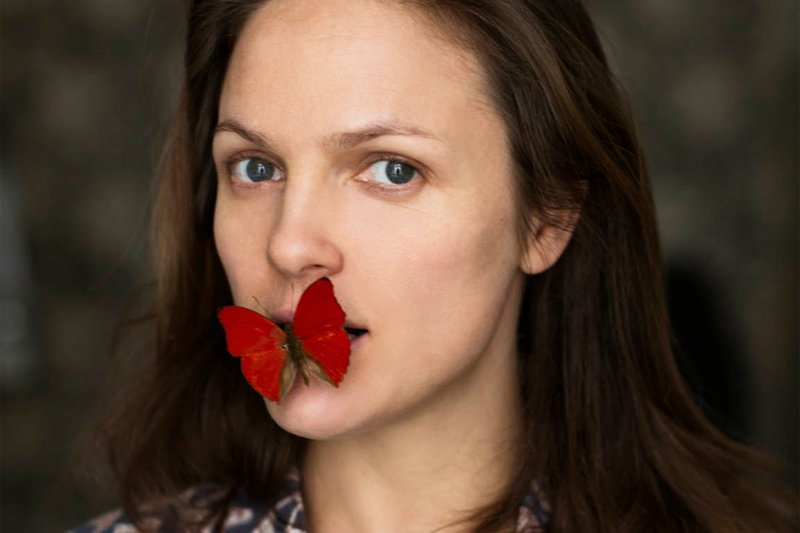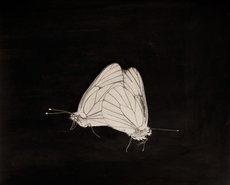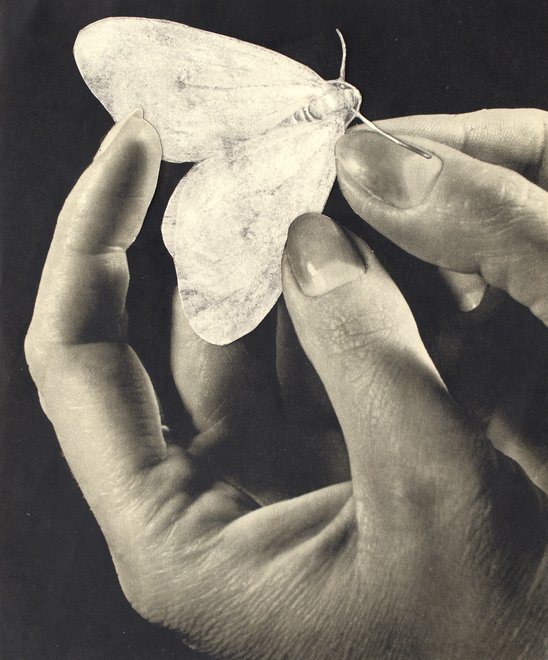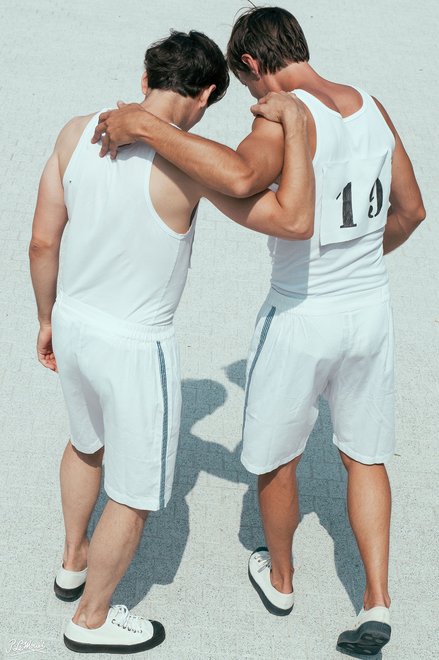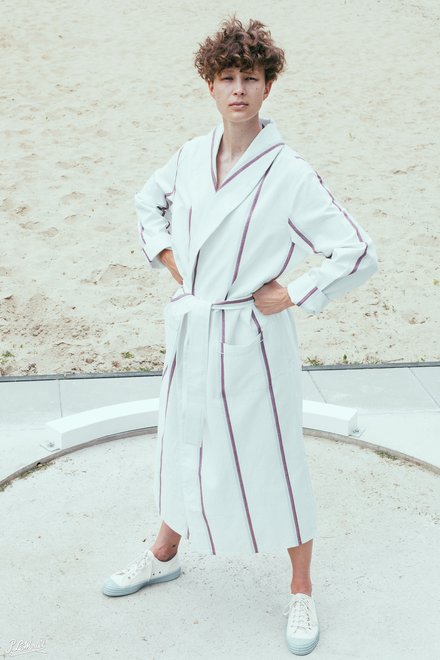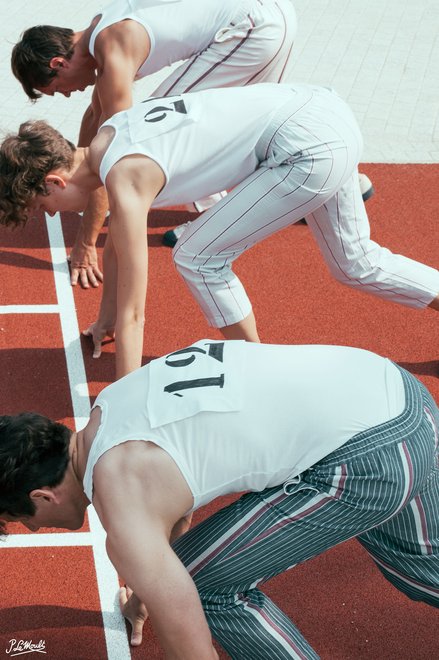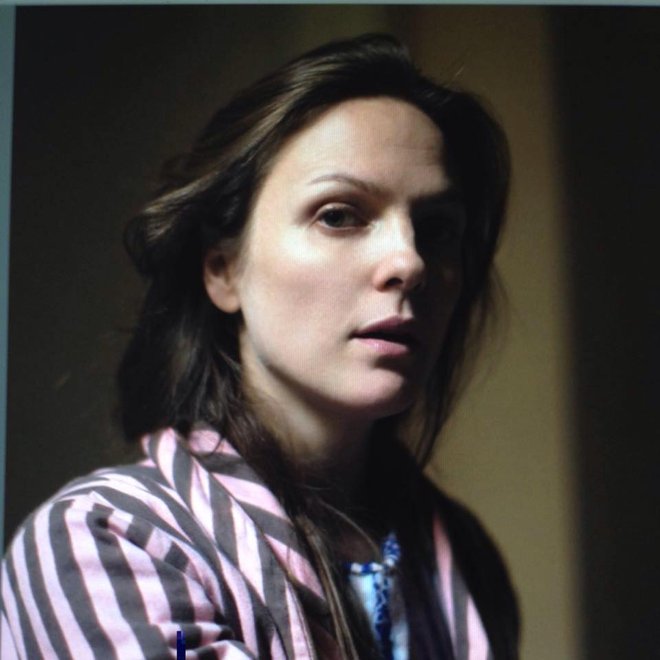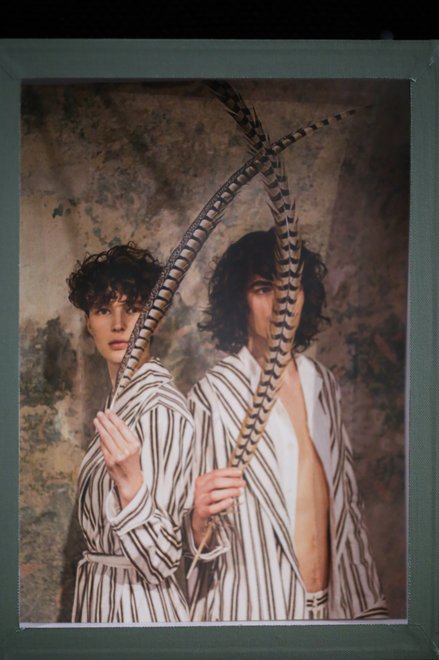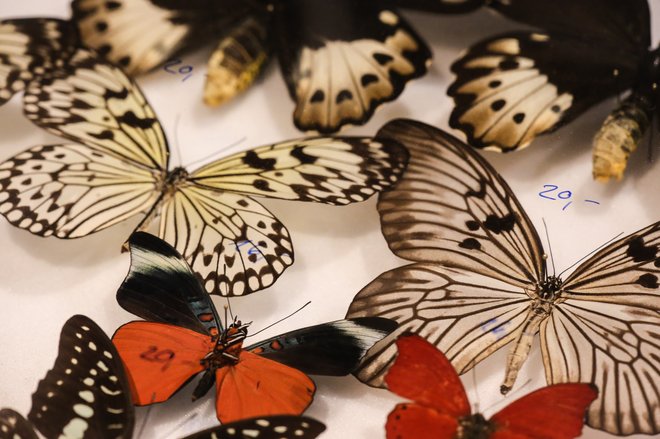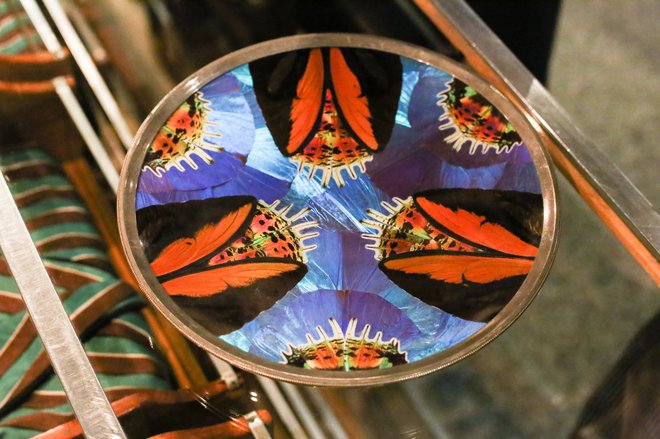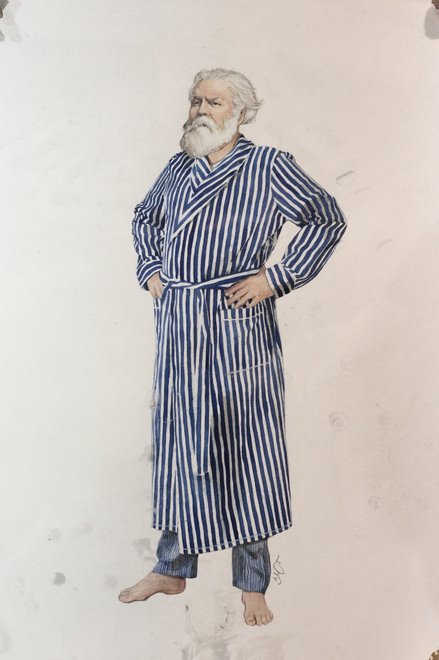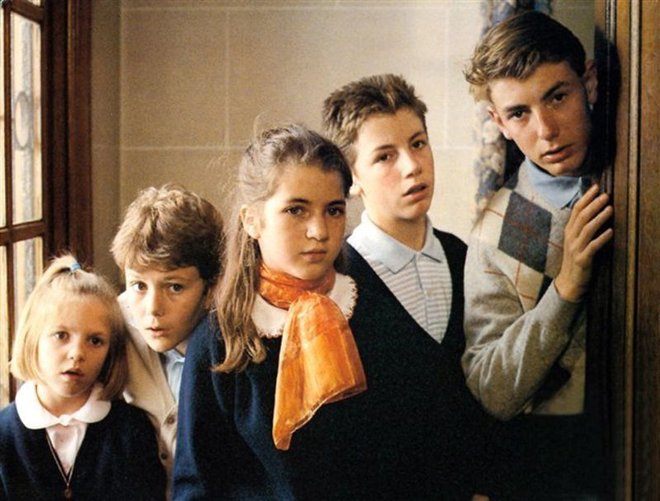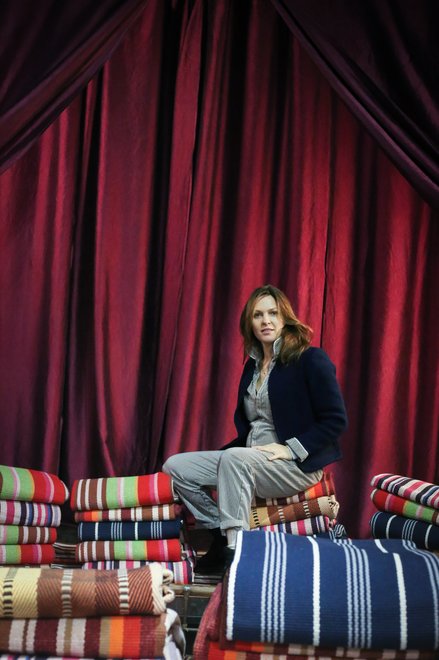Woven history
In addition to maintaining her own small fashion label, charismatic Frenchwoman Praline Le Moult and her husband Harri Cherkoori run the venerable Vienna textile shop INDIE, located a stone’s throw from St. Stephen’s Cathedral. Her great-grandfather, Eugène Le Moult, was a world-famous butterfly collector whose clients included the writer Vladimir Nabokov and the Emperor of Japan. His legendary life was immortalized as a comic strip in Tintin magazine, in the film classic Papillon, and in his great-granddaughter’s fashion collections.
“Butterflies are like snow.”
Antje Mayer-Salvi: You must have spent your childhood surrounded by hundreds of butterflies—impaled and dead though they may have been.
Praline Le Moult: No, not at all. There wasn’t a single butterfly in our house. Not a single one! A few spiders hanging around in boxes, that’s all. The past wasn’t relevant to my parents, only the future mattered. My father, who was a well-known ad man and art director, hired his friend Philipp Starck to design our villa on an island in Paris. That pretty much says it all.
Philipp Starck was the hottest designer of the eighties, not to mention the embodiment of “new design.” I’ve seen photos of your parents’ house—it was iconic for its time. But your great-grandfather’s adventurous life story really wasn’t of interest?
His life was like a fairy tale, but to tell you the truth, speaking about it was taboo in our family. He was passionate about his butterflies, but he neglected his children and his wife. My grandfather Pierre, who knew him very well because he had photographed butterflies for him, didn’t have anything good to say about him. When I was older and wanted to interview him about Eugène, he vehemently refused. After my father passed away in 1979, I began piecing together the story of my great-grandfather’s life from documents, books, and other sources. My husband was a great help; he’s a very good detective.
„Fashion as Fiction!“
You’ve even referred to Eugène Le Moult a “muse” for your retro sportswear collections—small editions made from hand-printed, exceptionally soft cotton.
My pajamas and other collections are not inspired by butterflies—that would be pretty conventional and trite—but by the life of my great-grandfather, who was very interested in functional clothing. People love the story behind it. When they wear my clothing, they become part of an exciting life, actors in a film. My motto as a fashion designer is “fashion as fiction!”
Speaking of which: Papillion, the classic movie starring Steve McQueen and Dustin Hofmann, references the way your great-grandfather began earning his first money and his later his fame thanks to the help of convicts.
Indiana Jones was supposedly also modeled on my great-grandfather Eugène, among others. He began his career as a teenager in the rainforests of the French Guiana penal colony—his father, a civil servant, had been sent there to oversee the expansion of the road network. There were poisonous snakes, jaguars, huge spiders, and then there were these beautiful butterflies like the morpho. He soon began hunting the latter systematically and selling them to France; in the process he became an expert on them.
The demand was unbelievably high, he is rumored to have sold from four to as many as twenty million specimens. How can one individual capture that many butterflies?
He used convicts, just as is shown in Papillon, who were able to earn a little temporary freedom and money that way. Somewhat controversially, I’d say. And in addition he collected like crazy. Three years after his return to Paris in 1908, Eugène had the fourth-largest butterfly collection in the world, after those in museums in Washington and London. The King of Belgium, the Emperor of Japan, Nabokov, as well as Sergei Khrushchev, son of the Soviet Prime Minister, were among his customers. But he also did scientific research.
„Indiana Jones was supposedly also modeled on my great-grandfather Eugène.“
There’s even a “morpho” emoji on the iPhone.
Yes, that actually is a morpho. The butterfly’s coloration isn’t caused by a pigment, but rather by the refraction of light, which is why they can keep forever and stay colorful. In the past butterflies were abundant; today they are at risk of going extinct due to climate change.
Why do we consider butterflies so beautiful?
I’ve often wondered what makes butterflies so desirable. They are design objects as well sources of wonder. They are beautiful because they want to camouflage themselves by looking like flowers, their main source of food. They are unique, since most types cannot mate with each other. They’re hard to catch and incredibly fragile. They suddenly appear from out of nowhere—it’s magical. And they’re rare. Many butterflies only exist for a brief time each year. They’re like snow!
“There were poisonous snakes, jaguars, huge spiders, and then there were these beautiful butterflies.”
Who inherited your great-grandfather’s collection?
His apartment building in Paris was filled from top to bottom with finds, insects, preserved snakes, and lepidoptera drawers. There was something of the compulsive hoarder about him. He also ran a small shop there, where he would greet customers with a dove perched on his shoulder. He was bizarre and yet quite enterprising at the same time. My great-grandfather was not above claiming that a species was very rare and demanding a correspondingly high price, when in fact he had stacks of storage boxes full of them. Unfortunately, my sister and I only have a few cases left.
Where is the rest of the booty — the epitome of beautiful, natural design?
His incredibly large collection has been auctioned off to all corners of the world and can be seen in the world’s most famous museums, including the Natural History Museum in Vienna, which owns some of his specimens. The lepidopterologists there told us that they can be recognized by my great-grandfather’s delicate handwriting. The lepidoptera collection in Vienna is home to one of the largest collections of butterflies and moths in the world, with approximately 3.5 million prepared specimens and several hundred thousand more that have not been prepared.
You studied costume and stage design at Central Saint Martins as well as art at the École des Beaux-Arts de Paris. Can you tell me what beauty is?
People are born beautiful. If they experience enough love in their lives, they stay beautiful until the end of their days.
Thank you for the interview!

